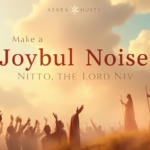Rapture Timeline
Today we will talk about the rapture timeline. Many Christians do not know what this means. The rapture is a significant event in Christian belief that describes the moment when all believers in Christ will be taken up to Heaven. This topic raises many questions: When will it happen? What will it look like? Why is it important? Be in the mode of meditation as we read through God’s word and seek clarity on the rapture timeline, its definitions, and historical views. We will explore various aspects of the rapture through scripture, as it shapes our understanding of the end times and God’s wonderful plan for humanity.
Understanding the Rapture
The term ‘rapture’ itself comes from the Latin word ‘rapio’, meaning ‘to seize’ or ‘to snatch away.’ In Greek, the comparable word is ‘harpazo’ (ἁρπάζω), which conveys a similar meaning. This word is used in 1 Thessalonians 4:17, where it describes believers being caught up to meet Jesus in the clouds. This indicates a sudden, extraordinary event where God’s faithful are taken to be with Him. The Hebrew concept of such a gathering often relates back to the idea of a communal ascent to meet God, emphasizing the intimate relationship believers will share with Him in eternity.
Historically, views on the rapture have evolved since the early church. Many theologians from the Reformation period did not emphasize a separate rapture but spoke of the Second Coming. However, in the 19th century, the modern popular understanding of the rapture was popularized, particularly by John Nelson Darby, who promoted the idea of a pre-tribulation rapture. This view suggests that believers will be taken up before a period of great tribulation occurs on earth (1 Thessalonians 1:10). Over time, this perspective developed into various interpretations within Christianity, ranging from pre-tribulation, mid-tribulation, to post-tribulation views.
Throughout the Bible, we have hints and prophecies concerning the timing of the rapture. For example, Matthew 24:30-31 speaks of a gathering of the elect, which many interpret as the rapture. In Revelation 3:10, believers are promised protection from the hour of trial. These passages support the belief that God has a timing and plan for those who are faithful, providing comfort and assurance of His return.
Key Biblical Passages Related to the Rapture
To comprehend the rapture thoroughly, we turn to various key scriptures that place the rapture within a broader eschatological framework. The rapture is closely connected with the Second Coming of Christ, and understanding its timeline helps illuminate our faith in God’s promises. One of the central passages describing the rapture is found in 1 Thessalonians 4:16-17:
“For the Lord himself will descend from heaven with a cry of command, with the voice of an archangel, and with the sound of the trumpet of God. And the dead in Christ will rise first. Then we who are alive, who are left, will be caught up (harpazo) together with them in the clouds to meet the Lord in the air, and so we will always be with the Lord.”
This passage speaks of a time when Christ will return and the faithful dead shall rise first, followed by those still alive being gathered in an instant. This understanding forms a significant part of the rapture timeline, which assures believers of hope and ultimate reunion in God’s presence.
Additionally, Matthew 24:36-44 provides insights about the timing of this event, indicating that no one knows the exact hour of Jesus’ return. Such verses encourage vigilance among believers; knowing that the rapture could occur at any moment urges us to remain spiritually alert and prepared. In verse 44, Jesus instructs us: “Therefore you also must be ready, for the Son of Man is coming at an hour you do not expect.”
Another important scripture is 1 Corinthians 15:51-52, which reveals the transformative nature of this event. Paul writes, “Behold! I tell you a mystery. We shall not all sleep, but we shall all be changed—in a moment, in the twinkling of an eye, at the last trumpet.” The mystery denotes that the rapture introduces a significant transformation, and this change is swift and glorious, emphasizing God’s power over death and mortality.
The Rapture and the Great Tribulation
One crucial element to consider in the rapture timeline is the relationship between the rapture and the Great Tribulation. This future period, characterized by suffering and turmoil, is mentioned in several prophetic books like Daniel and Revelation. Notably, in Revelation 7:14, the faithful are depicted as being washed in the blood of the Lamb, shaping the context for understanding God’s plan for salvation during tribulation.
Many views exist regarding whether the rapture occurs before, during, or after the tribulation. Those who advocate a pre-tribulation rapture point to passages like Revelation 3:10, as mentioned earlier, suggesting that God’s people will be spared from this trial. However, others interpret the rapture occurring in the midst or after the tribulation, posing that believers will endure hardship for faith.
For instance, Matthew 24:21-22 refers to the tribulation as unprecedented, yet believers are not to fear as God will ultimately bring justice. “For then there will be great tribulation, such as has not been from the beginning of the world until now, no, and never will be. And if those days had not been cut short, no human being would be saved. But for the sake of the elect those days will be cut short.” This indicates God’s mercy towards His people even during trials, emphasizing our dependence and faithfulness in Him.
The Rapture in Other Biblical Prophecies
Connecting the dots between the rapture and other biblical prophecies can lead us to a deeper understanding of God’s flow of history. For example, Zechariah 14:4 depicts the Lord’s return to the Mount of Olives, suggesting a physical return of Christ that aligns with the timing of the rapture. Luke 21:27 reemphasizes this idea of the return of the Son of Man in clouds with power and great glory, promoting the visual nature of the rapture event as a shared experience among believers.
The vision of the rapture coexists within passages filled with hope, assurance, and warning. Revelation 19:7-8 describes the marriage supper of the Lamb, promising that a feast awaits faithful believers—an event that follows the rapture. This conjures a warm invitation into fellowship with God, emphasizing the joy awaiting His people.
In addition, 1 Thessalonians 5:9-10 reassures believers that they are destined for salvation through Jesus, providing a solid foundation for understanding our future in Him. “For God has not destined us for wrath, but to obtain salvation through our Lord Jesus Christ, who died for us so that whether we are awake or asleep we might live with him.” This highlights the loving nature of God’s redemptive plan for all who trust in Him.
Final Thoughts
In conclusion, understanding the rapture timeline provides us with hope and assurance as we look to the future. We see that the rapture is a significant event where believers will be gathered to meet the Lord. Throughout this study, we’ve recognized the importance of scripture in guiding our understanding of this event and affirmed the various interpretations that exist within the Christian faith. Whether pre-tribulation, mid-tribulation, or post-tribulation, what remains clear is that God loves us and has a plan for our lives.
As we await Christ’s return, we are called to be vigilant and prepared, living lives that reflect our faith and hope in Him. The promises in God’s Word remind us that we are not destined for judgment but for salvation. Let’s strive to share this wonderful truth with others, spreading the message of hope and love that can only be found in Jesus Christ. Together, we can look forward to the day of reunion in joyous anticipation as we keep our eyes on heaven.
May we always remember the comfort and joy that the rapture brings, allowing it to inspire us in our daily walk with God. Amen.
Further Reading
30 Bible Verses About Israel (With Explanation)
4 Ways to Encounter Grace and Truth: A Study on John, Chapter 4






Bible Commentary, Blog
30 Important Bible Verse About Despair (With Explanation)